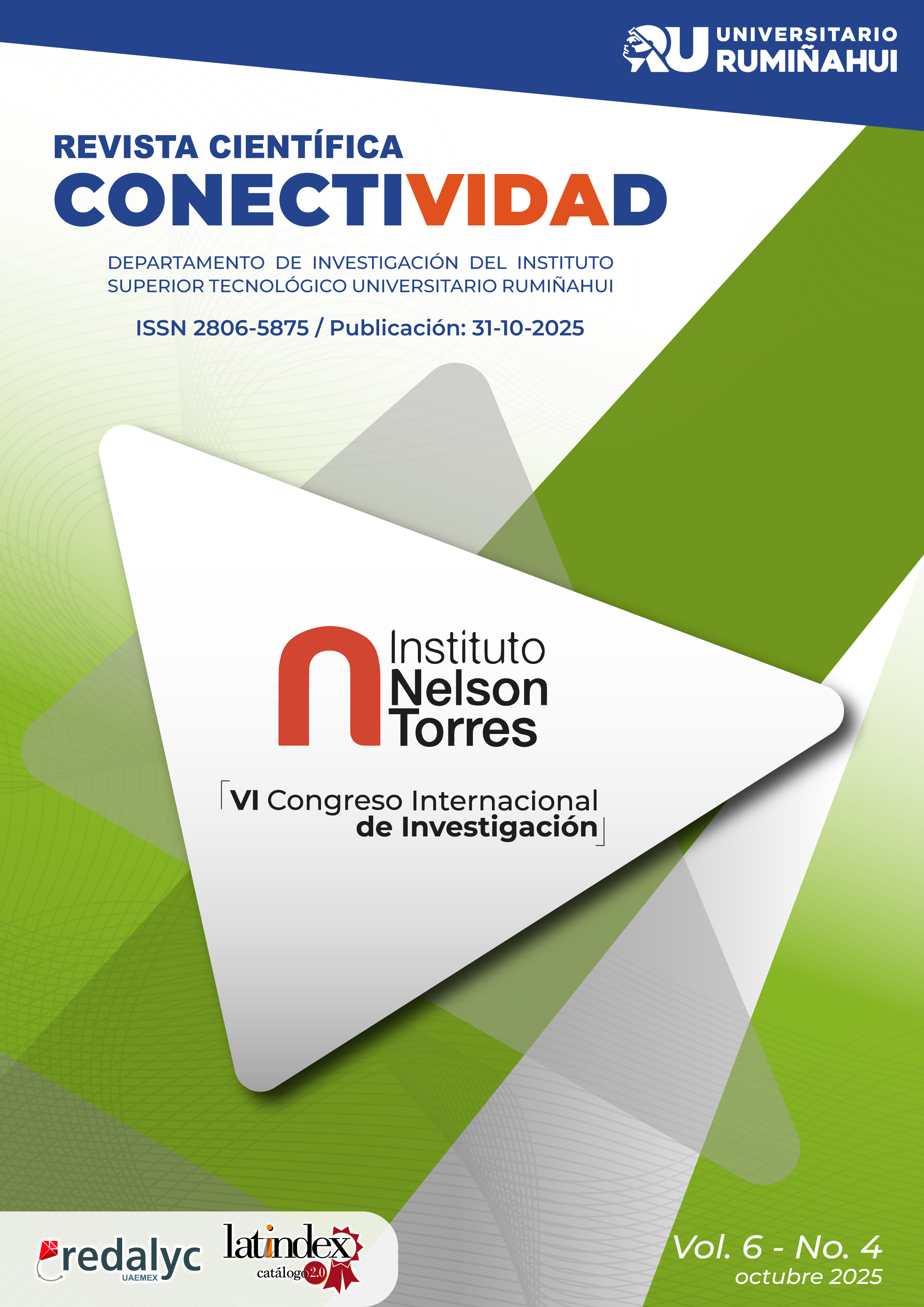Strategic for the preservation and dissemination of cultural heritage: Sala de la Capitanía in the Casa de los Marqueses, Latacunga
DOI:
https://doi.org/10.37431/conectividad.v6i4.366Keywords:
Graphic tools, Thematic Museum, Augmented realityAbstract
The House of the Marqueses located in the city of Latacunga in the historic center sector, which protects much of the tangible and intangible cultural heritage of the town of Cotopaxi. However, with the passage of time it has lost visibility due to the lack of strategic graphic tools that promote, in this case, the captaincy room, which contains the appropriate value to enhance its notoriety to both local and foreign tourists. This research aims to analyze, establish, apply and validate the appropriate graphic tools for its execution. A combination of methodologies is used in this case, participatory action research and user-centered design (UCD) in order to carry out an investigation where professional actors from the area share highly relevant knowledge of the place. On the other hand, the DCU evaluates the correct layout. of these tools for its promotion and impact it has on its visitors. The results show that as it is a thematic museum, adequate use of various elements is made that enhances its visibility, improves interactivity and quality for visiting users. Finally, after the study, signage was used that refines the user's understanding and augmented reality that improves the Interactivity with the entire public.
References
Atencio Huggins, Daniel & Dsilva, Franahid & Palomares, Hilmer. (2016). La Investigación Social y el Método de Investigación Acción Participativa. https://www.researchgate.net/publication/318403539_La_Investigacion_Social_y_el_Metodo_de_Investigacion_Accion_Participativa#fullTextFileContent
Calderón Roca, B., Choque Porras, A., & Quiles García, F. (2018). Nuevas tecnologías e interdisciplinariedad en la comunicación del patrimonio cultural. Academia.edu. https://www.academia.edu/45308526
Castro, S., Guzmán, B., & Casado, D. (2015). Las TIC en los procesos de enseñanza y aprendizaje (Vol. 13, p. 23). Redalyc. https://www.redalyc.org/pdf/761/76102311.pdf
Colasante, N. (2017). Estrategias de divulgación para la valoración del patrimonio cultural universitario. Academia.edu. https://www.academia.edu/85364129
Cunuhay Ante, G. B., & Oña Cevallos, B. I. (2019). Centro histórico de Latacunga: Análisis y perspectivas para el desarrollo del turismo patrimonial. https://repositorio.espe.edu.ec/items/ec9c0698-048b-48af-9964-1aeb457856cfx
Herrera, S., & Cáceres, N. (2020). La fiesta de la Mama Negra, uno de los patrimonios culturales intangibles de la ciudad de Latacunga, Ecuador. SciELO (SciELO Preprints). https://doi.org/10.1590/scielopreprints.671 DOI: https://doi.org/10.1590/SciELOPreprints.671
Espeso-Molinero, P. (2017). Características y retos de la investigación acción participativa (IAP). Una experiencia en investigación turística. Dimensiones Turísticas, 1(1), 53–80. https://doi.org/10.47557/APGJ3821 DOI: https://doi.org/10.47557/APGJ3821
García, M. (2020). La fiesta de la Mama Negra y su promoción turística. Revista académica.
Guardia, S. B. (2018). Conservación del patrimonio cultural y desarrollo sostenible. Universidad de San Martín de Porres, Cátedras UNESCO.
Instituto Andaluz del Patrimonio Histórico. (2011). El patrimonio cultural. Junta de Andalucía. https://www.iaph.es/export/sites/default/galerias/patrimonio-cultural/documentos/gestion-informacion/que_es_patrimonio_cultural.pdf
Instituto de Patrimonio Cultural del Ecuador (INPC). (2005). Reconocimiento como Patrimonio Cultural Intangible de la Nación. https://www.patrimoniocultural.gob.ec/fiesta-de-la-mama-negra-o-fiesta-de-la-capitania/
Kemmis, S. (1985). The action research planner. Deakin University Press.
Melo Fiallos, D. F., & Poaquiza Yumbulema, S. A. (2016). El valor histórico de los museos de Latacunga. [Tesis de Pregrado, Universidad Técnica de Ambato]. https://repositorio.uta.edu.ec/items/b4d1065a-899c-4caf-8a09-4f0e56e1898b
Ministerio de Cultura y Patrimonio del Ecuador. (2012). Definición de patrimonio cultural. https://www.culturaypatrimonio.gob.ec/patrimonio-cultural
Montero, Y. H. (2015). Experiencia de usuario: Principios y métodos. Editorial UX.
Moggridge, B. (2006). Designing interactions. MIT Press.
Ortega, E. P. (2004). La Mama Negra Novembrina (1963–2004). [Libro].
Palma Peña, J. M. (2015). El patrimonio cultural, bibliográfico y documental de la humanidad. Revisiones conceptuales, legislativas e informativas para una educación sobre patrimonio. Redalyc. https://www.redalyc.org/pdf/351/35130975003.pdf
UNESCO. (2010). Tipos de patrimonio cultural reconocidos por la UNESCO. UNESCO. https://www.unetxea.org/dokumentuak/UNESCOPatrimonio.pdf
Published
How to Cite
Issue
Section
License
Copyright (c) 2025 Instituto Superior Tecnológico Universitario Rumiñahui

This work is licensed under a Creative Commons Attribution-NonCommercial 4.0 International License.
The originals published in the electronic edition under the first publication rights of the journal belong to the Instituto Superior Tecnológico Universitario Rumiñahui; therefore, it is necessary to cite the source in any partial or total reproduction. All the contents of the electronic journal are distributed under a Creative Commons Attribution-Noncommercial 4.0 International (CC-BY-NC 4.0) license.







2.png)





